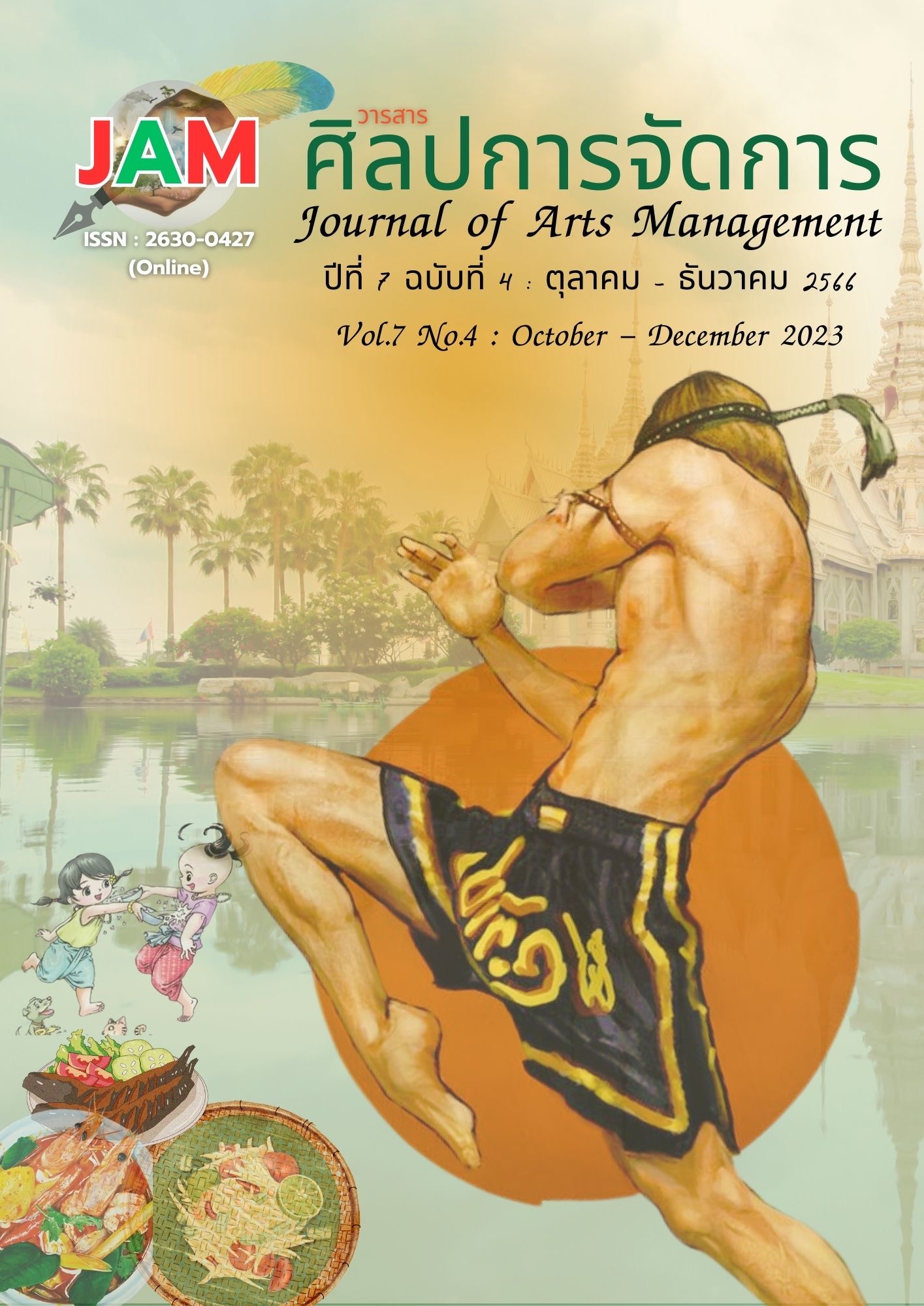Historical Factors Influencing the Presentation of the Thai Pavilion at the World Expositions
Main Article Content
Abstract
This paper discusses part of the research done for my Ph.D. thesis at the Faculty of Architecture of Silpakorn University, titled Nation Brand Strategies: National Identity, Architecture, and Cultural Heritage Value: A Case Study of the Thai Pavilion at the World Expos.
The critical research questions the paper addresses is how historical factors influenced Thailand’s presentation at the World Expos through its Thai Pavilion. The paper researches the changes in the Thai pavilions at the World Expos and investigates which branding strategies were used to present the national identity. One of the main findings is that since Thailand’s first participation in 1862, roughly three periods can be identified where the main reasons for participation can be summarized as follows: fending off colonialism during colonial times, nationalism during the change-over to a constitutional monarchy, and nation branding in recent times. These periods align with the World Expo's general eras of industrialization, cultural exchange, and nation branding. The presentation changes somewhat over time, but overall, the national identity through the pavilion still holds on to traditional Thai architecture instead of more contemporary architecture. Previous successes at the World Expo are part of this; part of it is that a contemporary national architectural identity is challenging to define. For branding purposes,
a need exists for authenticity and recognition. For these reasons, traditional architecture will likely continue to have a strong chance of reappearing at future World Expos, even if some elements are primarily symbolic. An important conclusion is that the successful presentation of traditional Thai architecture has led to few changes despite significant changes in world events and national events.
Article Details

This work is licensed under a Creative Commons Attribution-NonCommercial-NoDerivatives 4.0 International License.
Views and opinions appearing in articles in the Journal of Arts of Management It is the responsibility of the author of the article. and does not constitute the view and responsibility of the editorial team I agree that the article is copyright of the Arts and Management Journal.
References
Bangkok Post. (2021, December 20). Thailand Pavilion at Dubai World Expo. https://www.bangkokpost.com/business/2234751/thai-pavilion-stresses-nations-cutting-edge%20%5b68
Beier, J., & Damböck, S. (2011). The Role of Exhibitions In The Marketing Mix. The Global Association of the Exhibition Industry. https://www.ufi.org/archive/ufi-online-course/UFI_education.pdf
Bureau International des Expositions. (2018, September). Points of View: Nation Branding at Expos. Interview with Nicolas Bideau, Dietmar Schmitz and Jay Wang. https://www.bie-paris.org/site/en/blog/entry/points-of-view-nation-branding-at-world-expos
Bureau International des Expositions. (n.d.). Our History. https://www.bie-paris.org/site/en/about-the-bie/our-history
Digital Economy Promotion Agency (DEPA) (2022). Thailand Pavilion World Expo 2020 Dubai. https://depa.or.th/storage/app/media/WorldExpo/book/ThaiPavilionExpo2020.html#p=cover
Fine Arts Department. (1977). Thai Pavilions Abroad Designed by the Fine Arts Department. Rungsilp.
Fusinpaiboon, C. (2021, December 3.). Thai Pavilion: from the 1930s. art4d. https://art4d.com/en/2021/12/thai-pavilion-from-the-1930s
Horayangkura, V. (2017). In Search of Fundamentals of Thai Architectural Identity: A Reflection of Contemporary Transformation. Athens Journal of Architecture, 3(1), 21-40. http://www.athensjournals.gr/architecture/2017-3-1-2-Horayangkura.pdf
Intaraboonsom, N. (2023, August). Royal Sala in Bandung, Indonesia.
Jagoonchorn, W., & Horayangkura, V. (2022). Design of the Thai Pavilion Building for the World Expo 2020 in Dubai, United Arab Emirates. Journal of Architectural/Planning Research and Studies (JARS), 19(2), 55-80. https://so02.tci-thaijo.org/index.php/jars/article/view /246067
Jan. (2022, April 22.). Summary of World Expo Dubai with the Mission of 'Index Creative' to expand Thailand's Soft Power on the World Stage. Brand Buffet. https://www.brandbuffet.in.th/2022/04/success-of-thailand-pavilion-at-world-expo-2020-dubai
López-César, I. (2019, February). World Expos and Architectonic Structures. An Intimate Relationship. This Article has been Published on-line by Bureau International des Expositions (BIE), Paris. Bureau International des Expositions. https://openarchive.icomos.org/id/eprint/2055/1/BIE%20IN%20FOCUS%20Isaac%20Lopez%20Cesar.pdf
National Archives of Thailand. (1937). Sala Thai was used in the 1937 World Expo in Paris.
Thailand Convention and Exhibition Bureau (TCEB). (2011). 150 Years World Expo. Nation Multimedia Group Public Company Limited.


